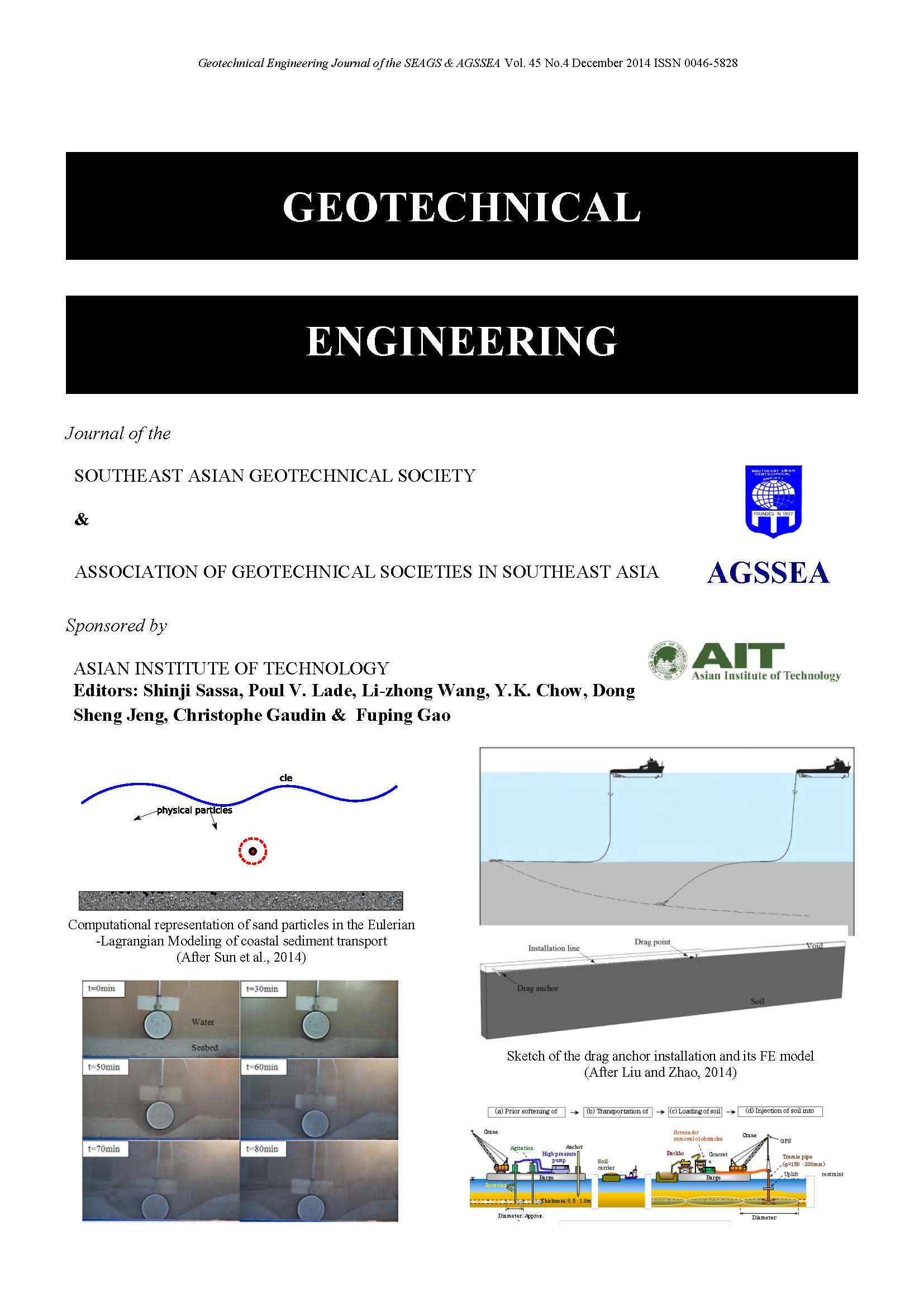Eulerian–Lagrangian Modeling of Current-Induced Coastal Sand Dune Migration
Main Article Content
Abstract
In this work, an Eulerian–Lagrangian framework is developed for the modeling of current-induced sediment transport and sand dune migration. In this framework, the fluid flow is modeled by solving the Reynolds-averaged Navier–Stokes (RANS) equations, and a conservation equation is used to describe the morphological evolution of the sand bed, both of which are formulated in the Eulerian framework. Empirical models are used for the erosion, the dispersion, and the drag and lift forces exerted on the sediment particles. The trajectories of individual particles are tracked in the Lagrangian framework, which enables a high-fidelity representation of the particle motions and composition statistics, as well as direct representation of sediment deposition without the need of ad hoc models. This framework consists of four tightly coupled modules: (1) a fluid flow solver based on RANS equations, (2) a morphological evolution modeling equation, (3) a Lagrangian particle-tracking scheme for suspended sediments, and (4) a dynamic mesh motion solver which deforms the mesh to account for the effects of morphological evolution on the flow field. The developed framework is validated by using previous results in the literature and is used to simulate coastal sand dune formation migration. Favorable agreements with benchmark results are obtained, demonstrating potential of the developed Eulerian–Lagrangian modeling framework for sediment transport.
Article Details

This work is licensed under a Creative Commons Attribution-NonCommercial-NoDerivatives 4.0 International License.
Copyright © 2019 Association of Geotechnical Societies in Southeast Asia (AGSSEA) - Southeast Asian Geotechnical Society (SEAGS).


